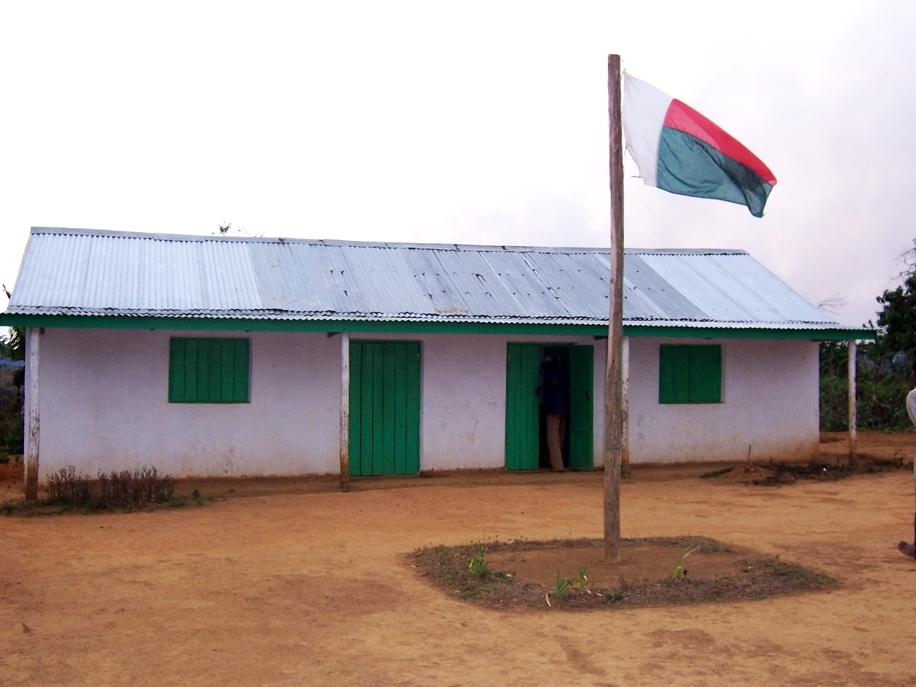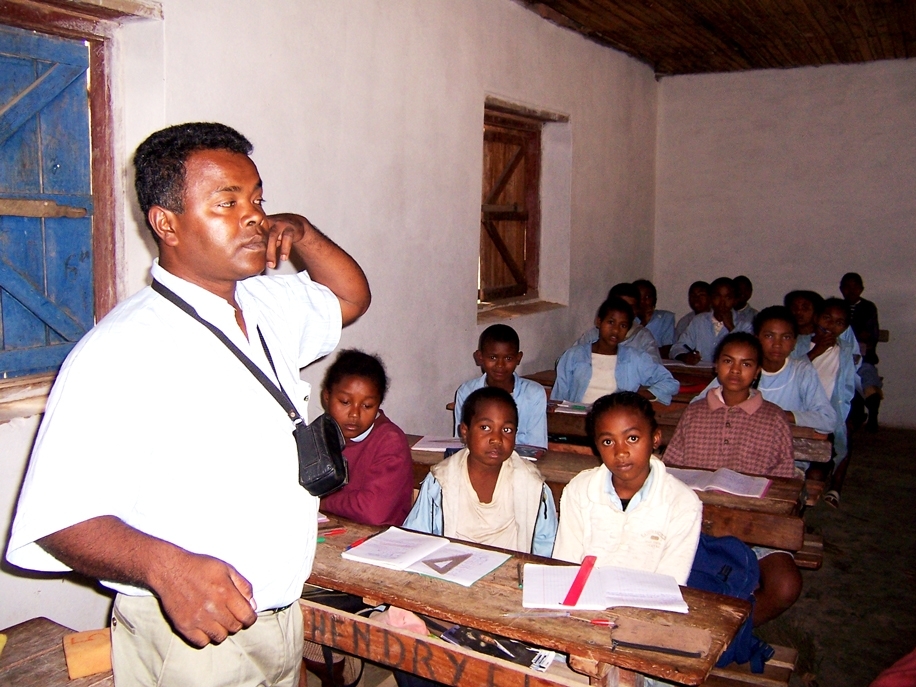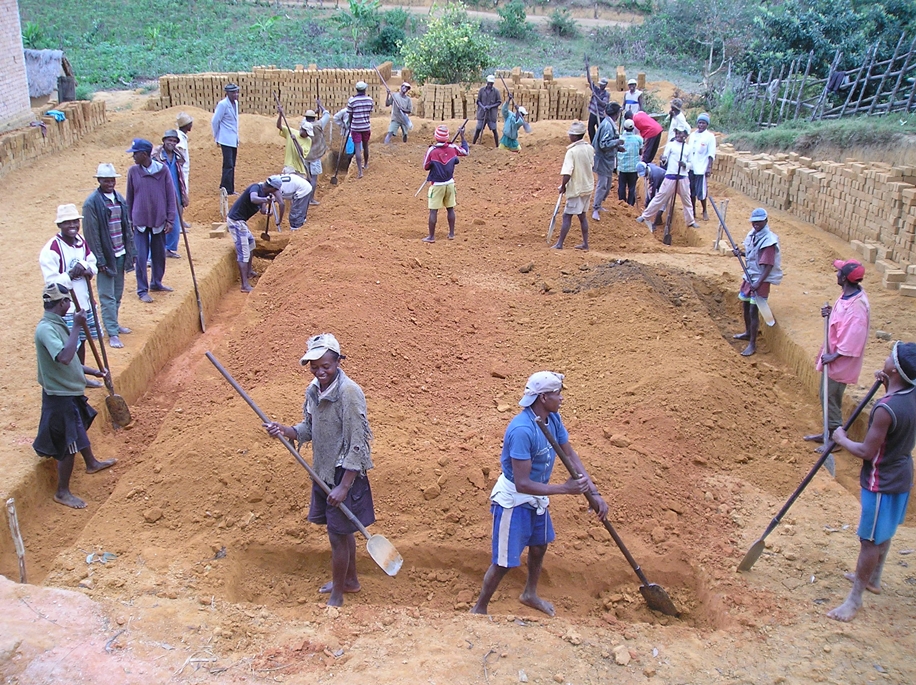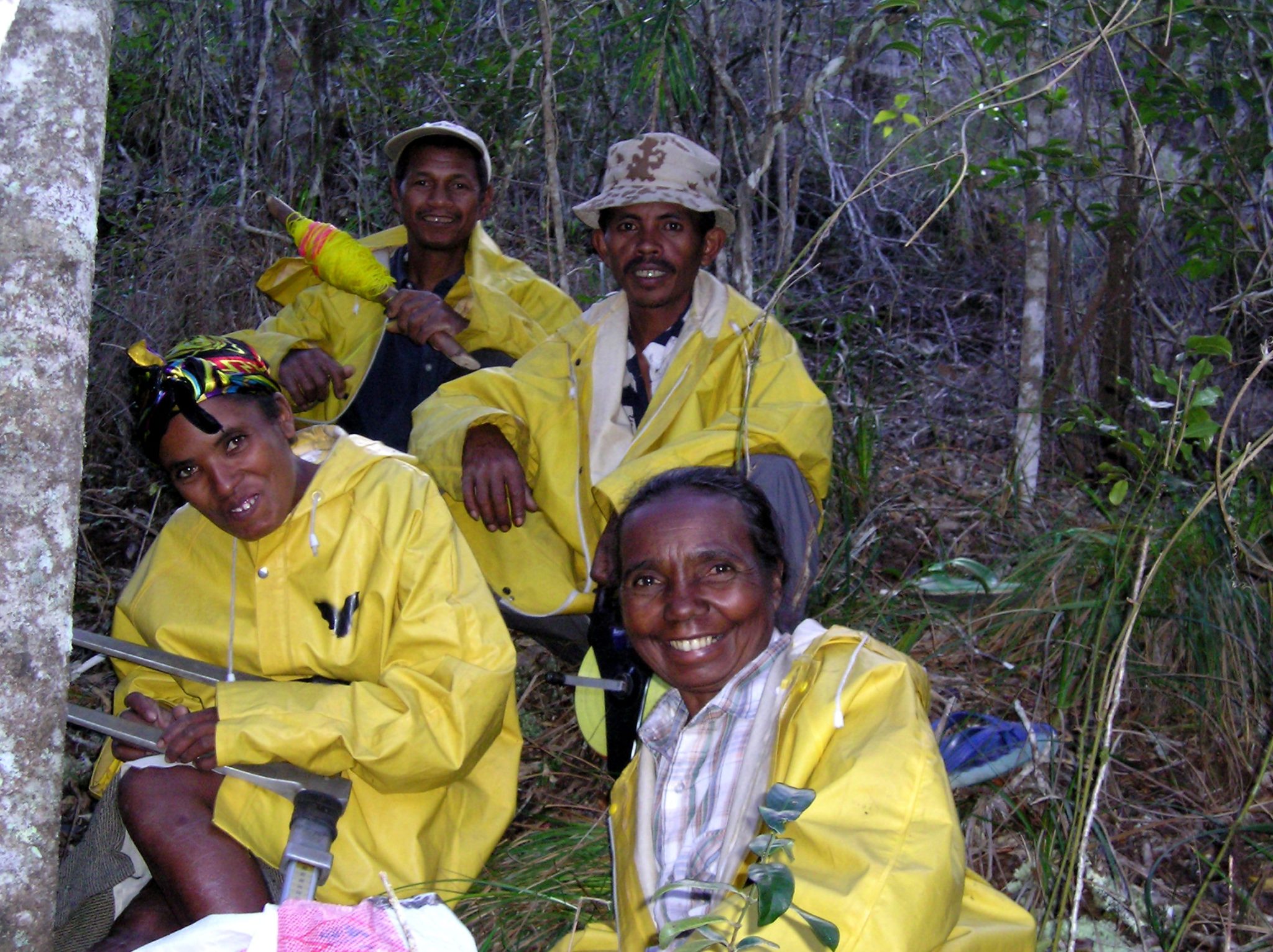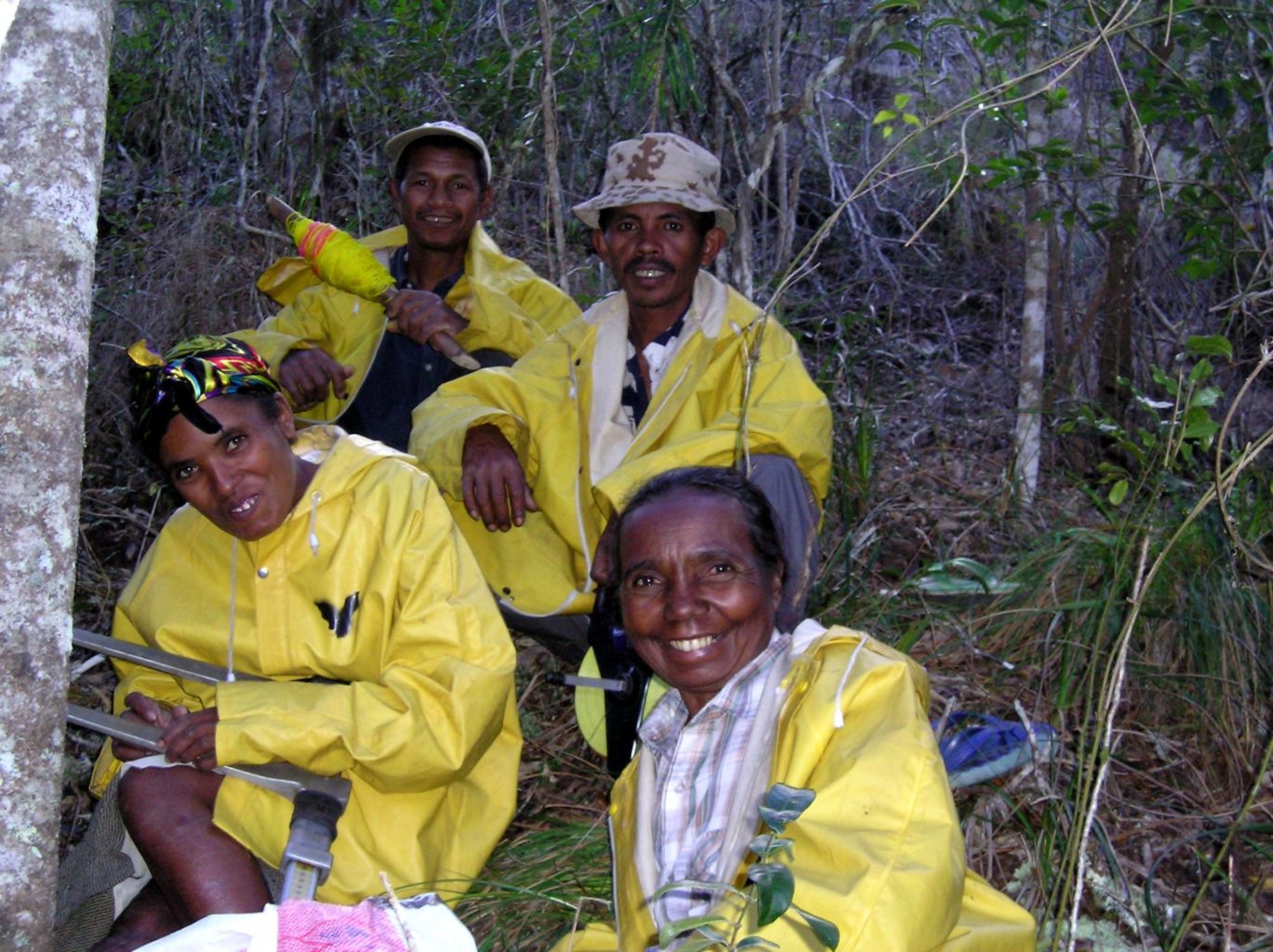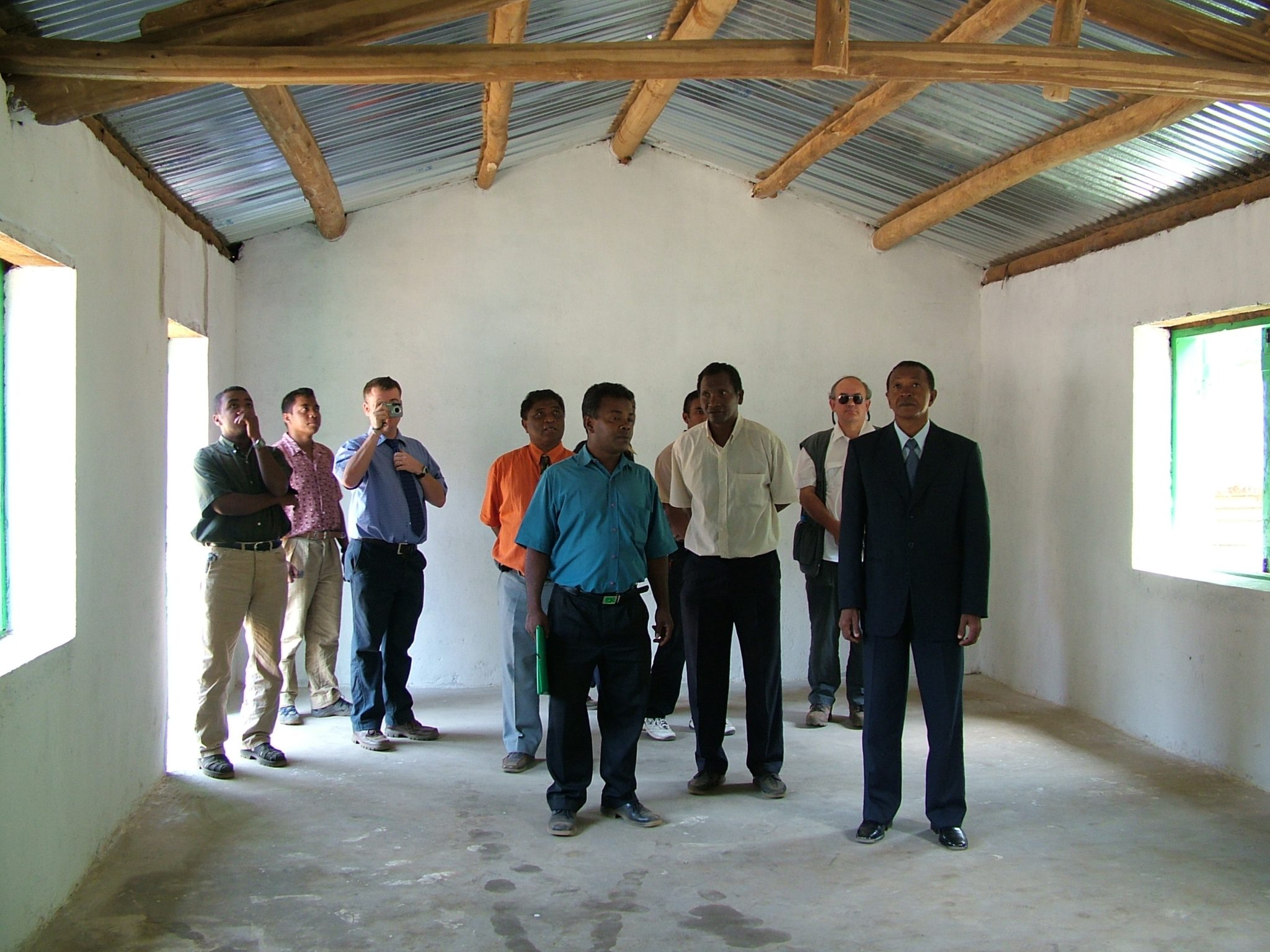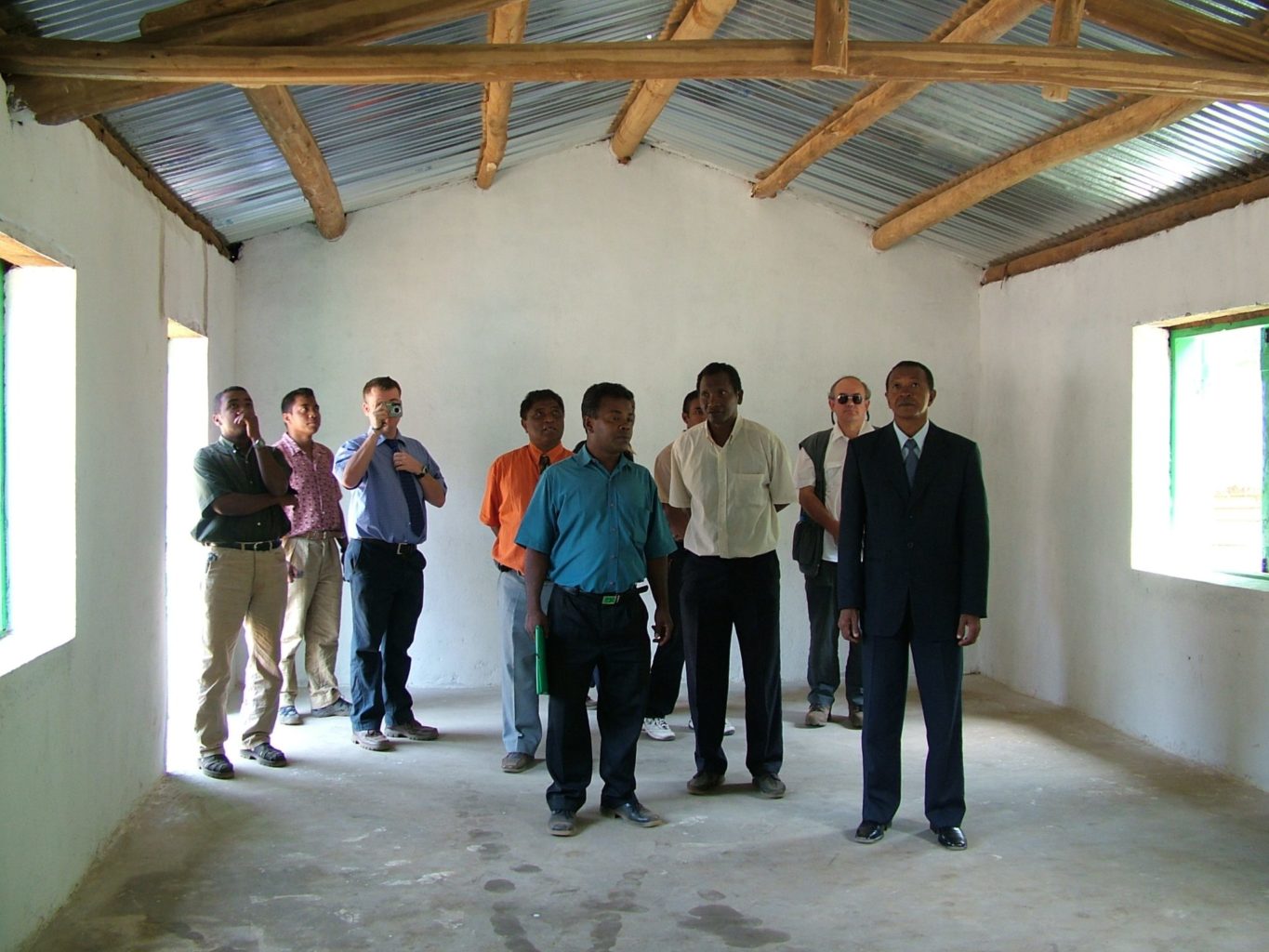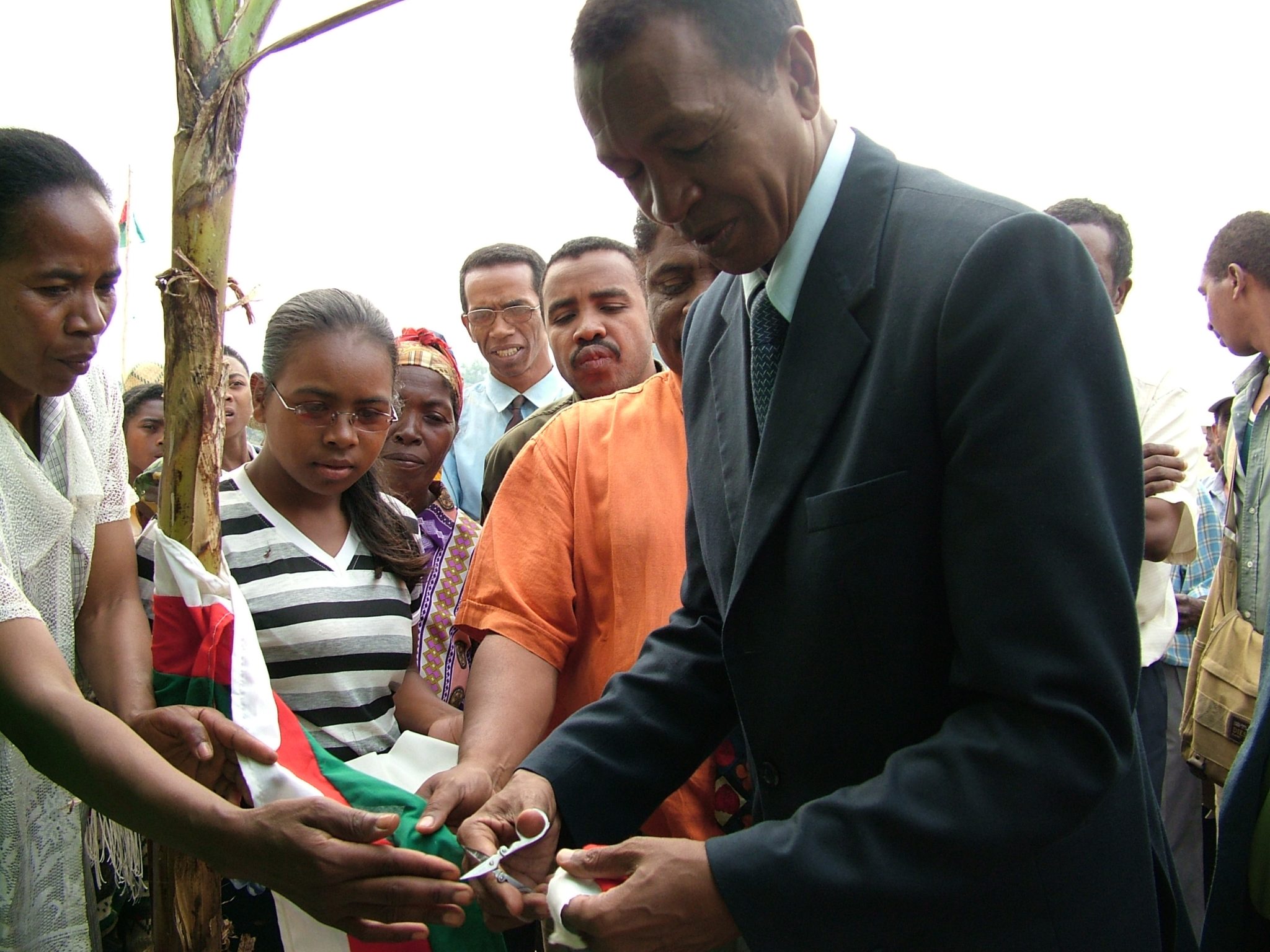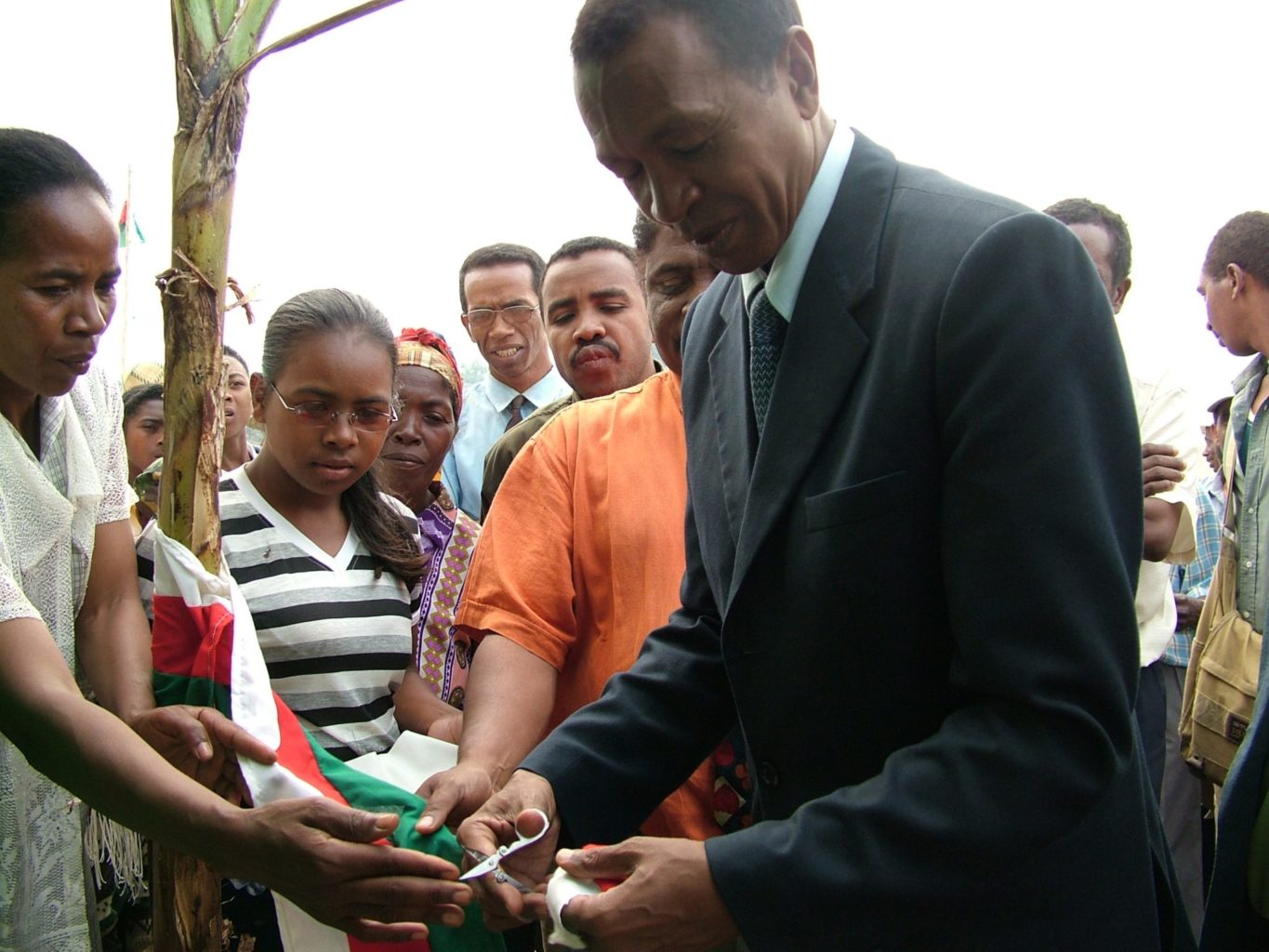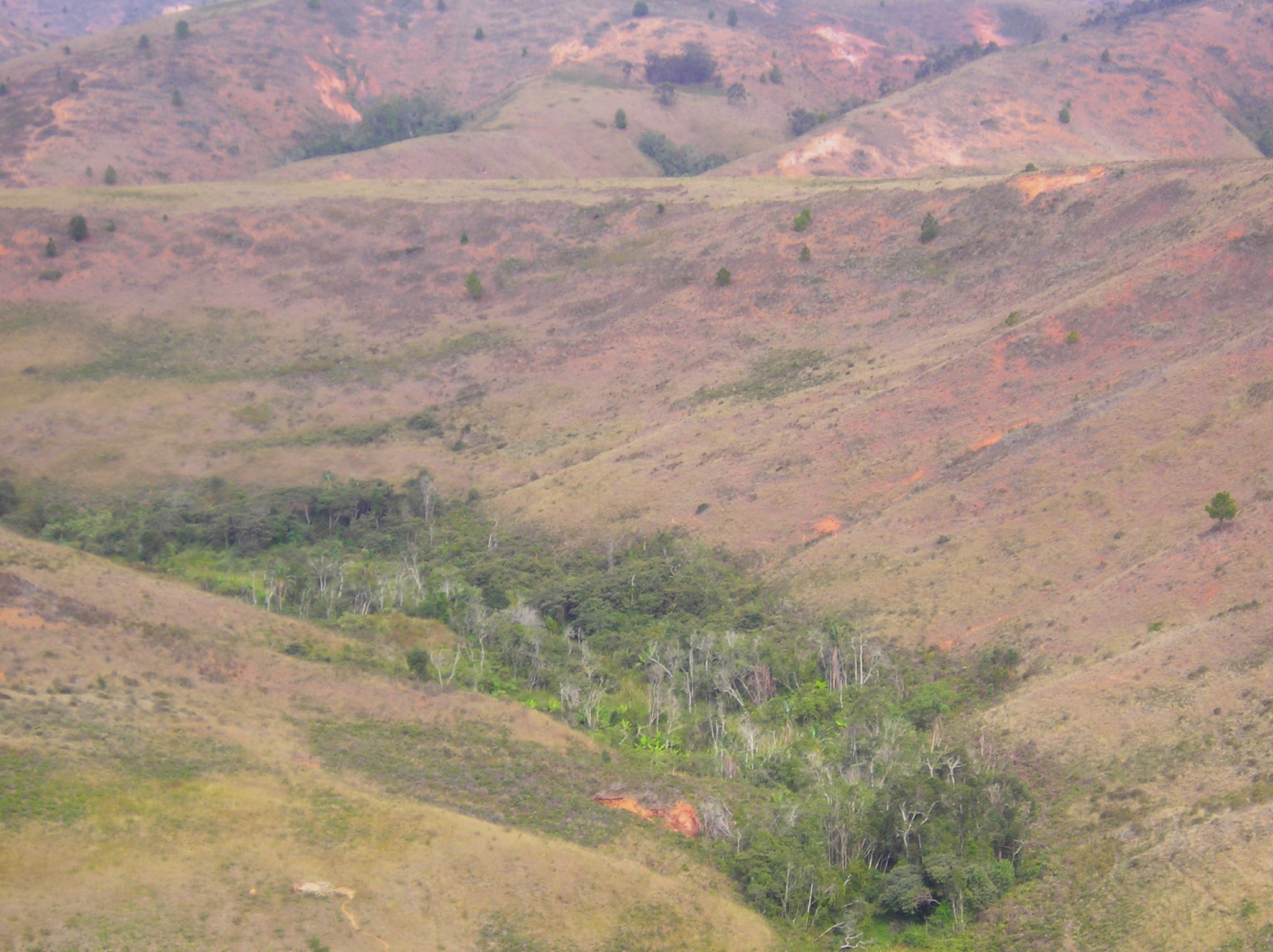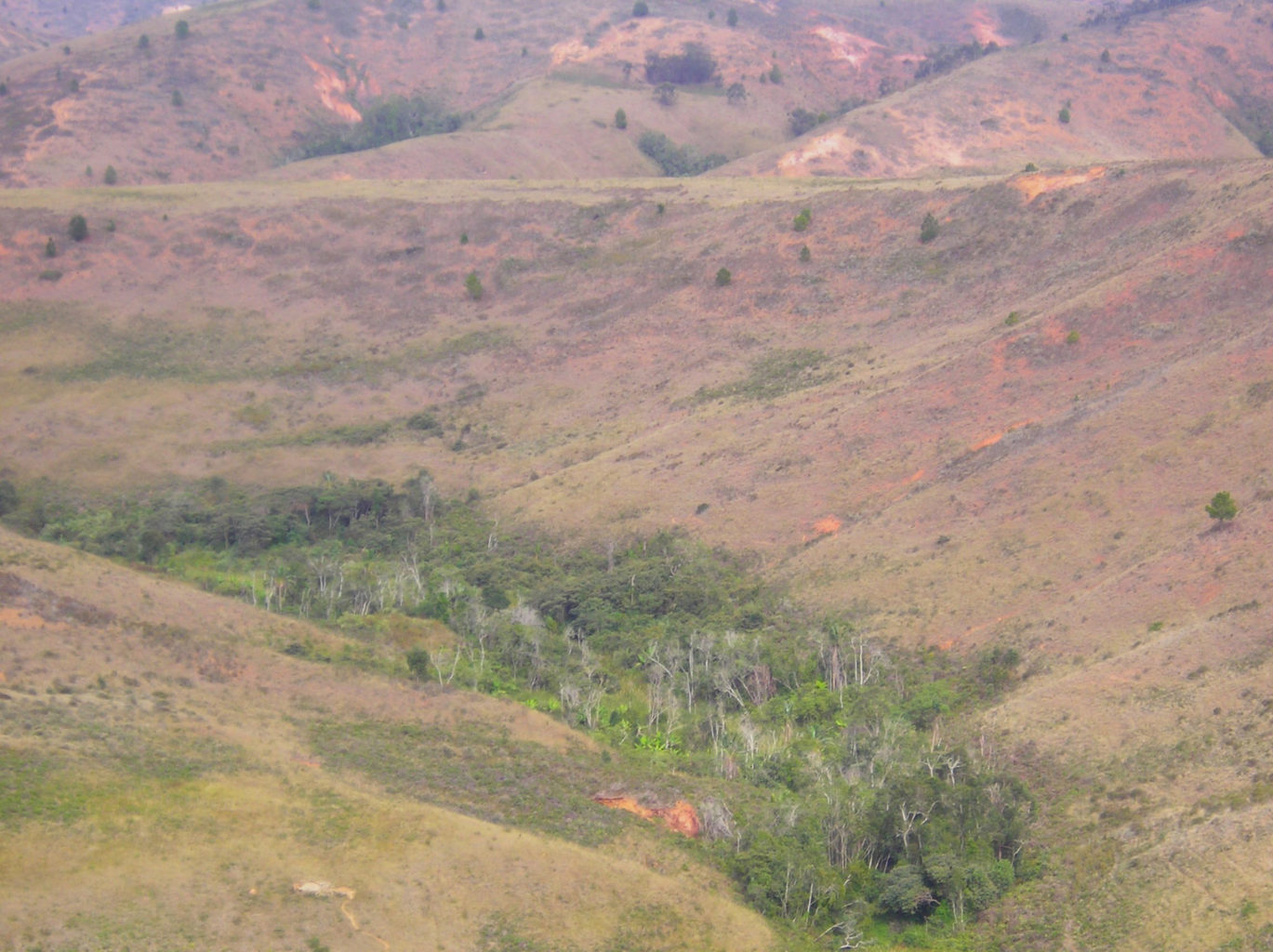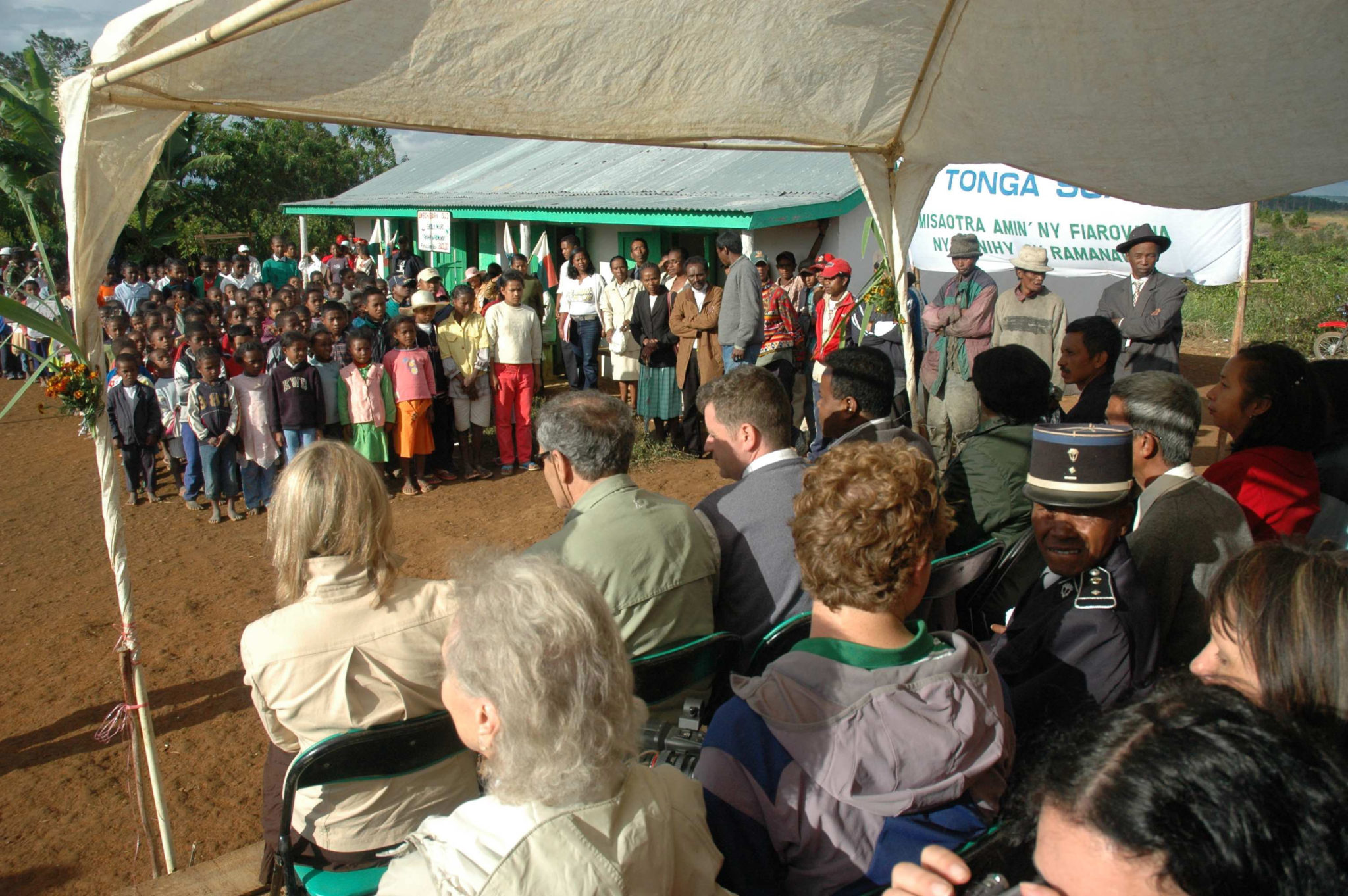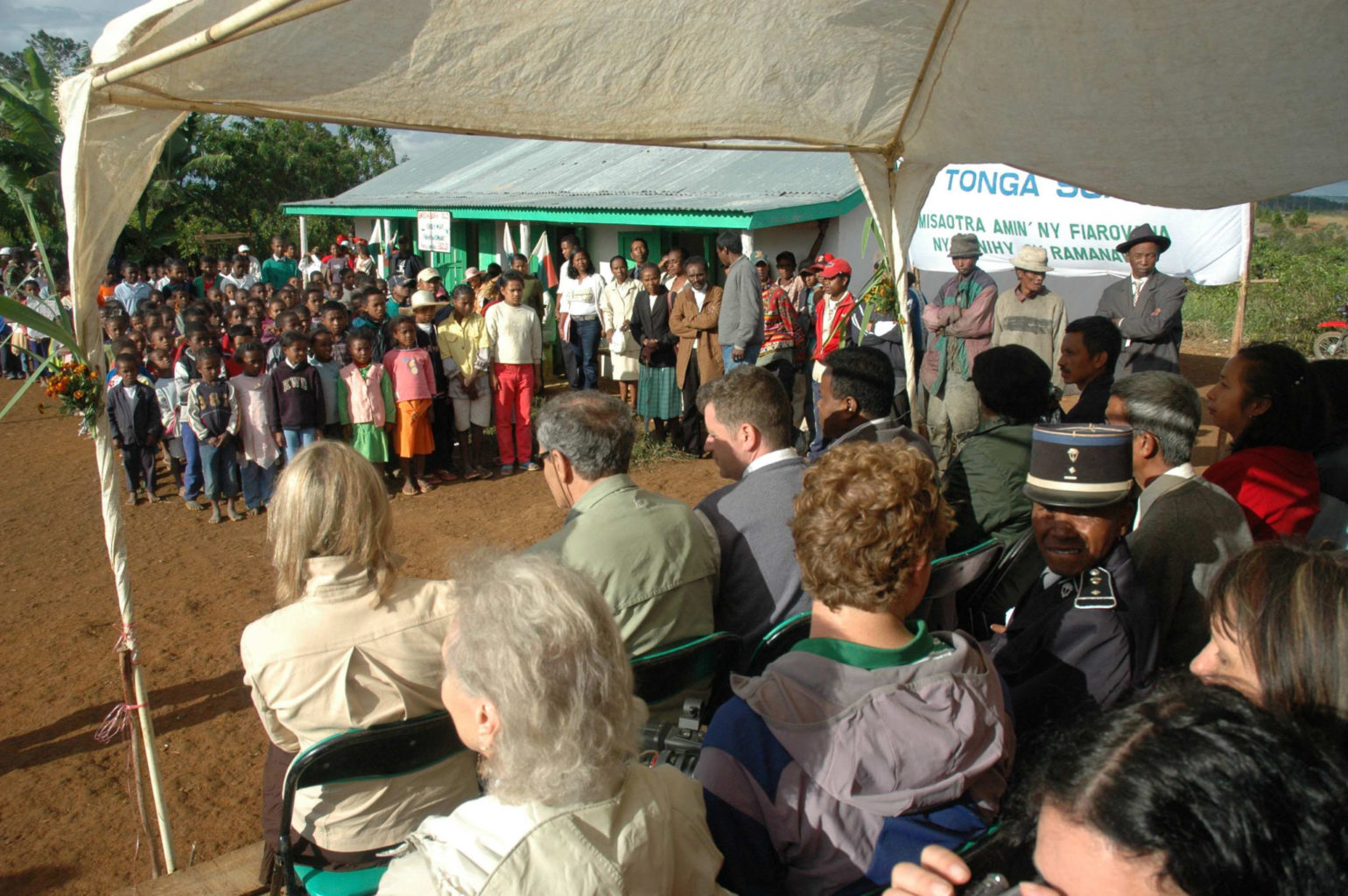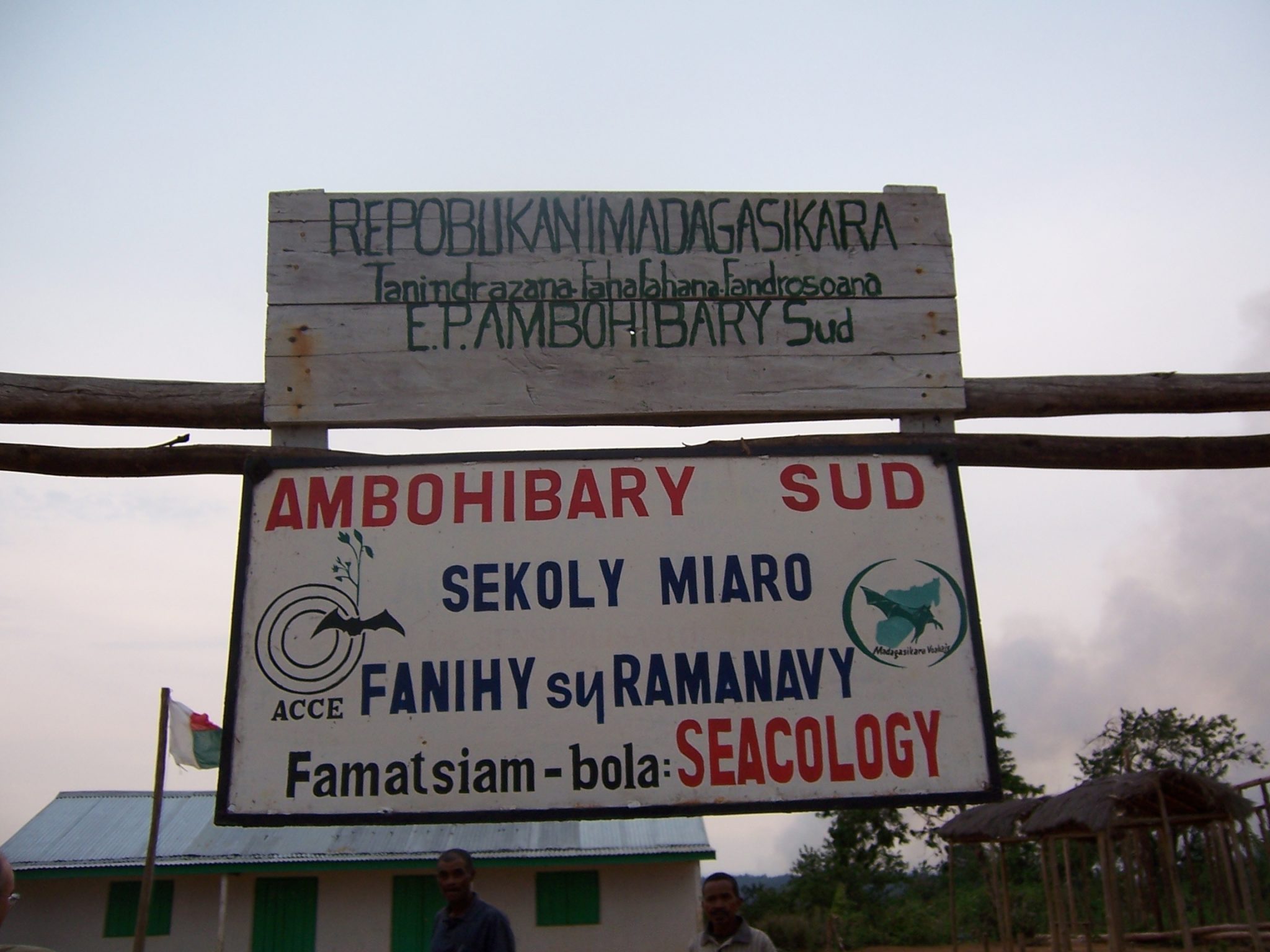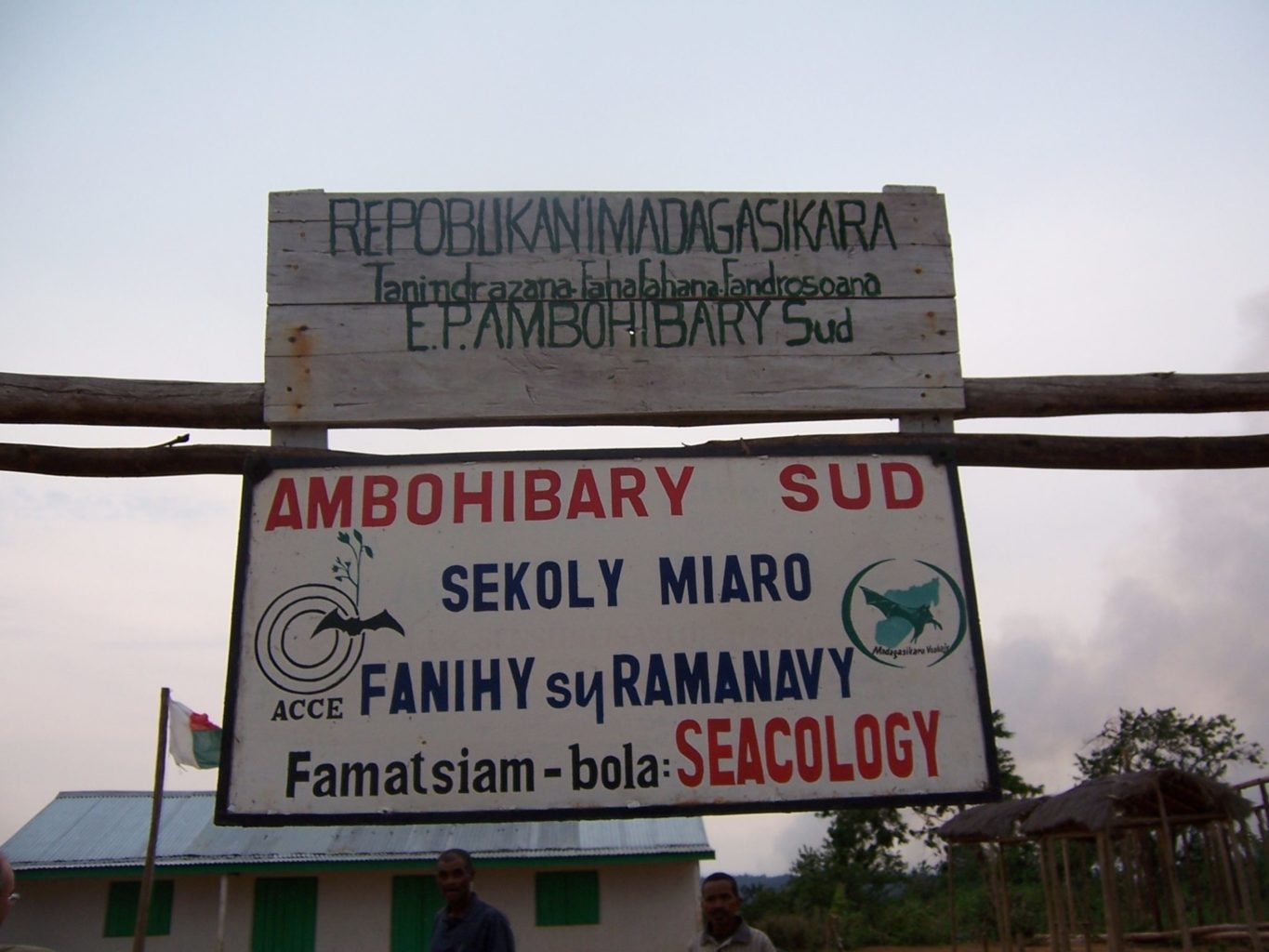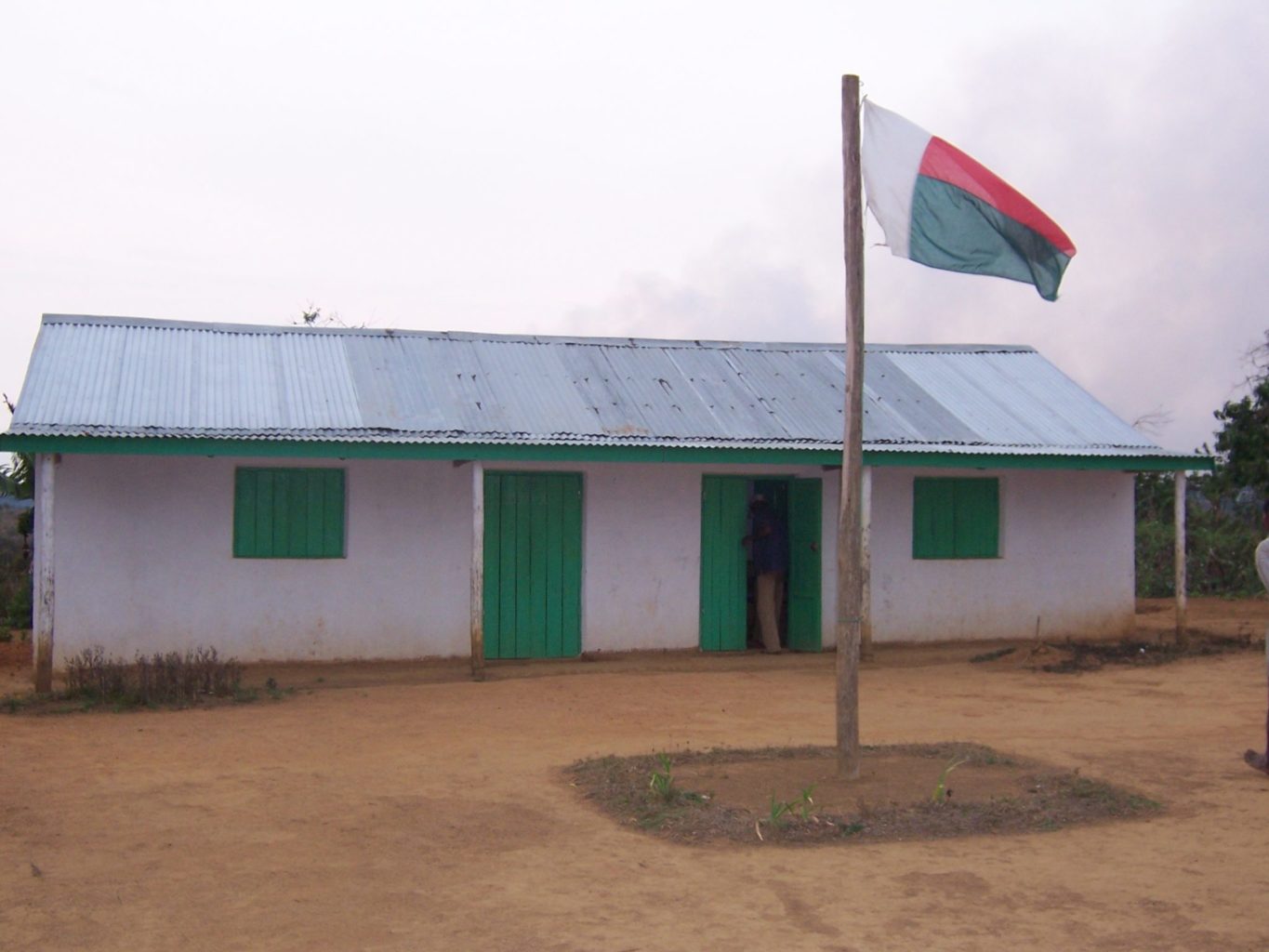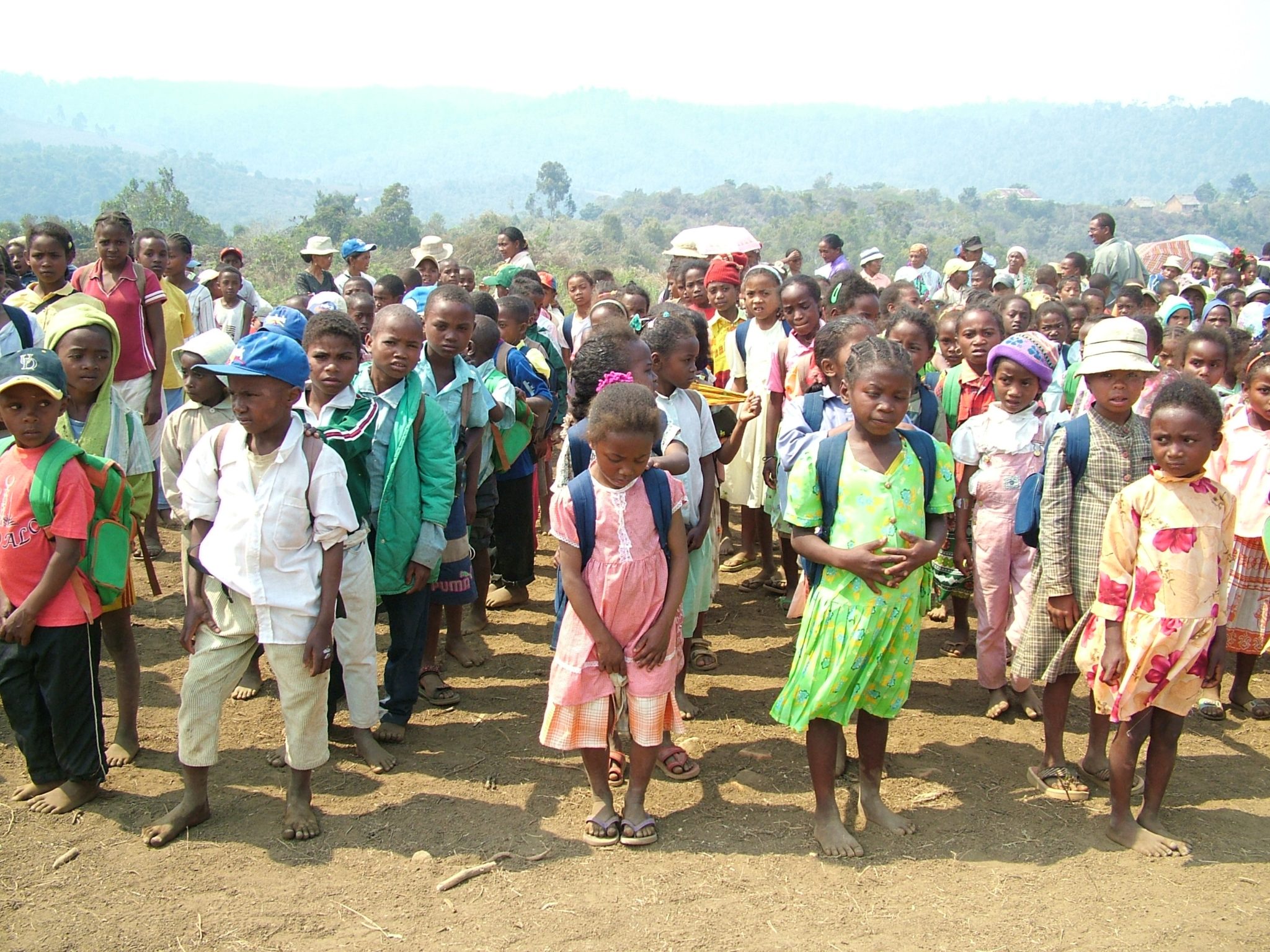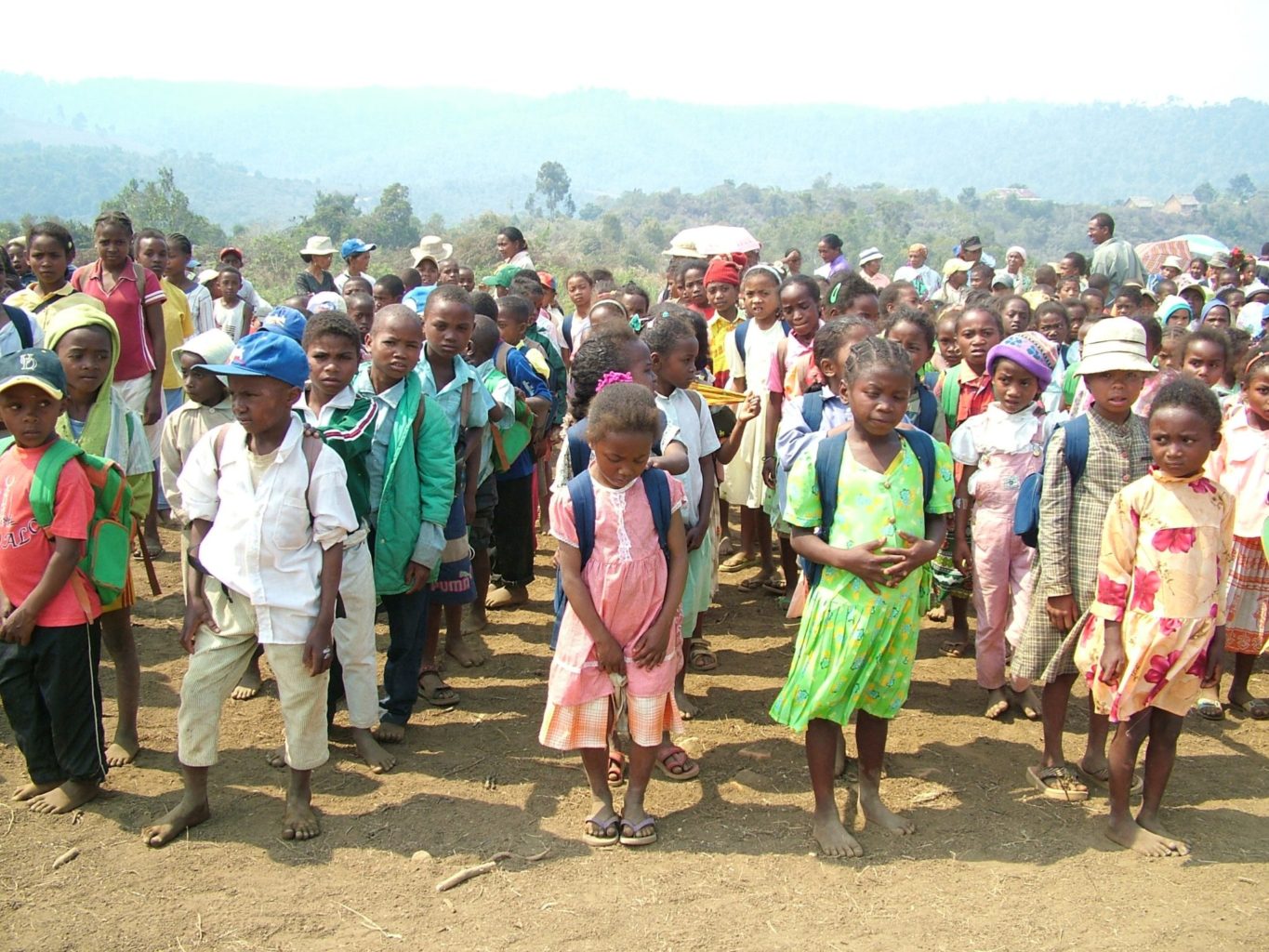Madagascar’s fruit bats, commonly known as flying foxes, are important pollinators. But because of hunting for bushmeat, uncontrolled fires, and logging, many of their roosts of have disappeared. In Madagascar’s Mangoro Region, a close network of 12 small forest fragments holds up to 4,000 of these bats. Seven nearby communities are working with local organizations Arongam-panihy – Culture, Communication and Environment, and Lamin’asa Fiarovana Ramanavy sy Fanigy to implement a dina, or social contract, to protect the roosts.
In exchange for this agreement, Seacology agreed to provide funding for badly needed repairs to each of the seven community municipal offices and 20 primary schools near the roosts. Later, the number of schools was reduced to 11 to better provide for the schools with the most need.


